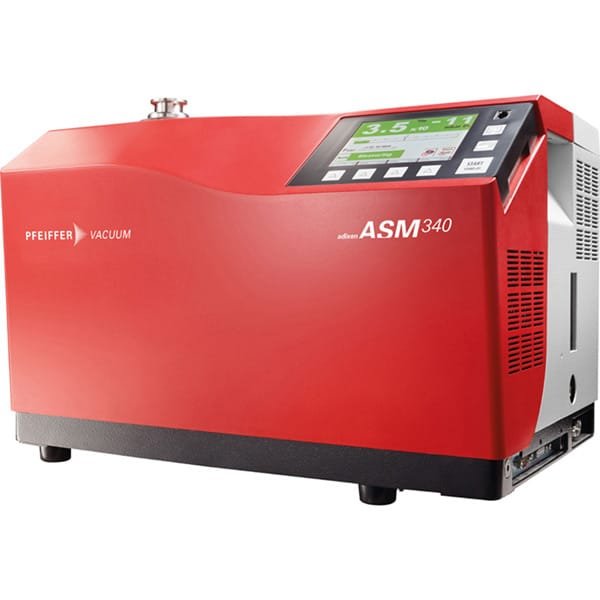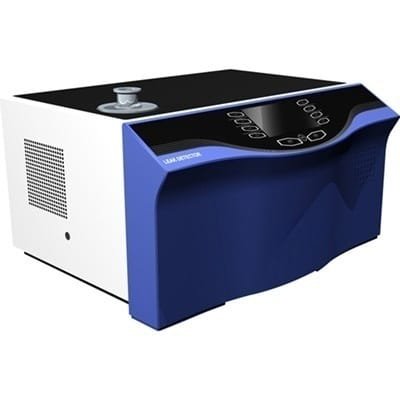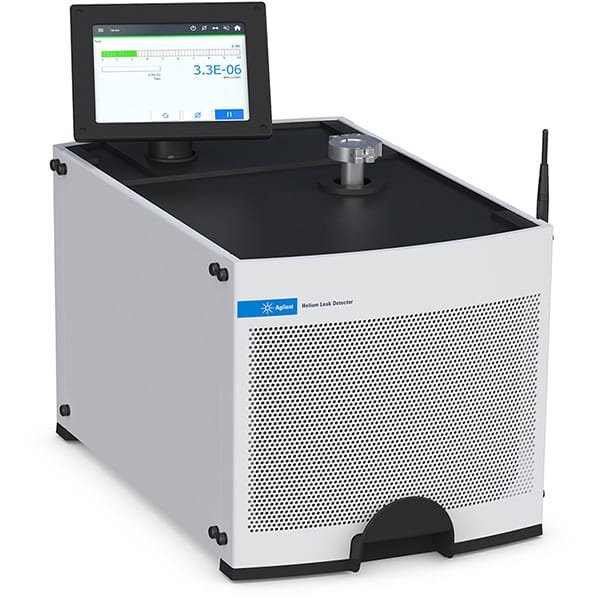Benchtop Leak Detectors

Pfeiffer Leak Detector ASM 340 & ASM 340D
The Pfeiffer ASM line offers a wide range of helium leak detectors suitable for most use cases such as research and development, semiconductor, and production applications.

TFM Insight Helium / Hydrogen Leak Detector

Agilent BR and BD Benchtop Leak Detectors
When foam-spray or bubble immersion tests lack the precision you need for leak detection, a helium leak detector offers a more accurate solution. This method is commonly used to test vacuum products or vessels for leaks, whether they are entering or escaping the test subject. A helium leak detector works by employing a mass spectrometer that ionizes helium particles. These ionized particles arc predictably, allowing them to hit the ion collector, where their presence can be measured. This mass spectrometry technique enables modern leak detectors to identify even the tiniest leaks, as small as 5×10⁻¹² mbar*L/s.
There are two widely used techniques for helium leak detection. The first is the “sniffing” method, where the chamber is evacuated, back-filled with a small amount of helium, and a probe is passed over the part to detect helium escaping from potential leak sites. The second method is “spraying,” in which the system is evacuated by the leak detector, and helium is sprayed over possible leak points—such as flanges, weld seams, and the chamber itself—to detect any helium entering the system.
Each method has its advantages and limitations. The sniffing technique is more precise in locating the exact source of a larger leak but requires more time and skill from the technician. On the other hand, the spraying method is faster but may not pinpoint the leak location as accurately. In many cases, the sniffing method is used after spraying to identify the exact location of a leak. The decision on which method to use depends on your Quality department’s assessment of what best suits the application.
